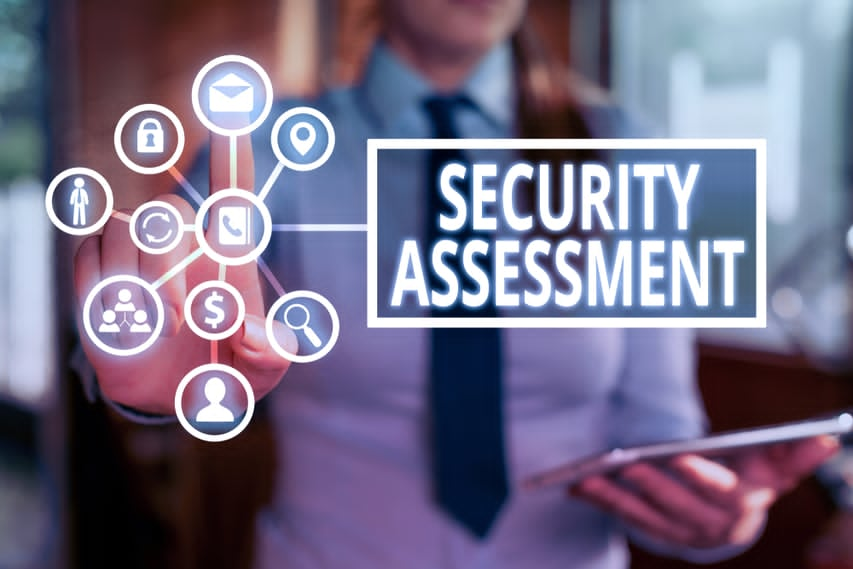Security is not merely locked gates or surveillance; it’s the presence of mind to recognise potential threats before they occur. A security needs assessment identifies points of vulnerability to potential threats and develops effective defences for buildings, businesses, or public areas. Guesswork in today’s unstable world is not sufficient. This assessment provides vision, guidance, and assurance, and as such must be included in the job description of all who are in charge of safety.
What Is a Security Needs Assessment and Why Is It Important?
A security needs assessment is an organized process that identifies risks in a site or organization and suggests practical methods to reduce risk. It’s not physical security alone, it also looks at operational vulnerabilities, the environment, and potential hazards. Whether you are protecting a business, school, or housing complex, it is the foundation of an effective security plan. If you need professional assistance, looking for a security needs assessment near me can refer you to professionals who are well experienced in the threats and regulations of your region.
When and Where Is a Security Needs Assessment Required?
Security audits are best conducted ideally at the beginning while planning any construction or on major overhauls. They are best applied in environments such as offices, schools, health care facilities, and residential campuses. High-risk environments, hectic areas, or environments with a history of cases or nature-based hazards also need to be specifically given special attention. The audit guarantees that the setting is not only secure but also meets planning controls or certificate schemes. Even with low-risk places, a routine check can identify concealed frailties that could otherwise be out of sight.
Who Is Qualified to Carry Out a Security Needs Assessment?
These tests have to be conducted by professional experts who are usually addressed as security experts or consultants. They should be approaching each project with an open mind, identifying weaknesses based on evidence, not assumption. An inexperienced analysis might overlook primary perils, and the selection of someone who knows the technical and human sides of security is therefore crucial to generating valid and cost-effective guidance. A locally qualified expert in most situations also possesses the further benefit of familiarity with local threats and regulations.
How to Identify Potential Risks and Security Threats
Risk assessment begins with an examination of the environment, entry points, visibility, adjacent properties, and available protection. But that is where it begins. Historical data, activity patterns, and common usage are layered on top in order to develop vulnerable areas that need not necessarily be readily apparent. It also entails looking at what practices are already in place internally, such as how individuals use the space on a daily basis. Whatever it is, whether it is poor lighting, susceptible entry points, or overly onerous access procedures, all contribute to the composite risk profile and resultant security plan ultimately implemented.
The Role of Stakeholders in the Assessment Process
Effective security does not exist in isolation. There must be good communication with residents who live, employees who work, or businesspeople who operate in the setting. Stakeholders, residents, employees, or planners have valuable feedback on routine habits of the day-to-day, prior incidents, and possible threats. Their input makes last-minute recommendations realistic, feasible, and suitable for the context. Getting stakeholders on board in the first place, the evaluation goes beyond the checklist to be a valuable collaboration that yields outcomes people are more likely to adopt and put into practice.
Recommended Security Measures Based on Assessment Findings:
Countermeasures may consist of enhancing access control, lighting, surveillance signage, or landscaping changes for increased visibility. Measures differ by site and need to be suitable to the degree of threat and usage. The goal is to design layered defense that deters intruders without making the environment unwelcoming. A considered approach balances functionality and the everyday needs of the individuals in the environment. To the extent feasible, recommendations should also consider future adaptability since needs shift or threats evolve.
Reporting, Documentation, and Meeting Compliance Standards:
After assessment, findings are put into a formal report. This document details risks that were identified, describes action that is suggested, and provides reasons for suggested remedies. It can be used to underpin planning applications, support compliance, or seek certifications such as those under environmental or safety schemes. The document is also a future guide to planning and developments. A concise and well-structured document is a sign of thoroughness and can be very handy whenever there is an audit, court case, or review after an occurrence.
Conclusion:
A security needs analysis is not a cautionary tactic, it’s a smart, proactive step toward ongoing safety. For compliance, planning, or peace of mind, it exposes concealed risks and offers bespoke solutions. For any structure wherein human beings live, work, or gather, the time spent to identify security needs is not discretionary; it’s required.
